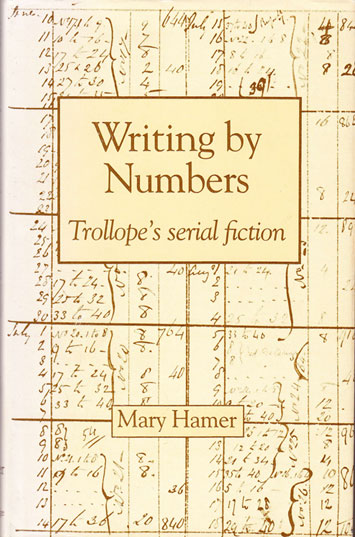Writing By Numbers: Trollope’s Serial Fiction
Anthony Trollope used to get up at 5.30 every day to write before setting off on his day job as a senior official of the Post Office. But he had so little faith in his own commitment that he drew up a calendar for himself and noted each day’s output as he wrote.
Writing by Numbers shows how these ‘working diaries’ enable us to track his writing process. We can work out where he got stuck and wrote little and the chapters where he blazed ahead, inspired. Getting a contract to write for a magazine moved him into grappling with writing for serial publication. He counted the words on a page, did the sums and from then on wrote in regular units to fit weekly or monthly numbers or instalments. 16 pages, 32, 48: these units shaped his fiction and suggested how it should be read.
It was a blow when I found the diary for The Last Chronicle of Barset, one of his best-known novels, was missing, with only the pencilled note ‘given to George Smith’ in its place. Some long-ago man called Smith? The case looked hopeless.
There followed a visit to the British Museum, a phone call to John Murray, the publisher, and a very polite letter of enquiry to an elderly lady. At last, on a table in a rather distinguished country house, home of the grand-daughter of the famous nineteenth-century publisher, George Smith, got out specially for me to examine, lay a tiny envelope. It was marked with the words in Trollope’s by now familiar writing Diary of The Last Chronicle of Barset. With unsteady hands I took out the little folded sheet, hand-ruled and speckled with numbers, the code I was looking for.
You can see the diary starring on the cover, right.
‘illuminating new study . . .Mary Hamer is an ideal interpreter of Trollope. She understands and likes him. She writes clearly, pleasantly and with a blessed absence of jargon.’ Times Literary Supplement.
